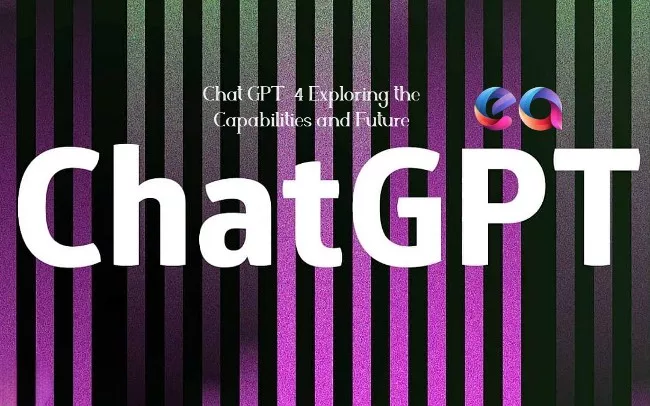
Chat GPT-4 is the latest addition to the GPT (Generative Pre-training Transformer) family of language models developed by OpenAI. This new model has generated a lot of excitement in the world of natural language processing (NLP) due to its advanced capabilities and potential applications.
In this article, we will explore what Chat GPT-4 (Artificial Intelligence)is, how it works, and its potential uses in various fields. We will also discuss some of the challenges associated with this technology and what the future holds for Chat GPT-4.
Points of Contents
What is Chat GPT-4?
Chat GPT-4 is the latest version of the GPT family of language models developed by OpenAI. This model uses deep learning algorithms to generate human-like text by analyzing large amounts of data. It is designed to understand and generate natural language responses, making it an ideal tool for chatbots and other conversational applications.
Chat GPT-4 is capable of understanding and generating text in multiple languages and can be trained on specific datasets to enhance its performance in specific domains. This makes it an incredibly versatile tool for a wide range of applications.
How Does Chat GPT-4 Work?
Chat GPT-4 works by analyzing large amounts of data to identify patterns in language usage. It then uses this data to generate text that is similar to human-written text. The model is trained on massive datasets, including text from the internet, books, and other sources.
[content-egg-block template=buttons_row]
The model is based on a transformer architecture, which allows it to process large amounts of data more efficiently than previous language models. It is also designed to learn from its mistakes, allowing it to continuously improve its performance over time.
Capabilities of Chat GPT-4
Chat GPT-4 has a wide range of capabilities that make it an incredibly powerful tool for natural language processing. Some of its key capabilities include:
- Multilingual Support: Chat GPT-4 can understand and generate text in multiple languages, making it a versatile tool for global applications.
- Enhanced Contextual Understanding: The model can understand the context of the conversation and generate more relevant responses.
- Domain-Specific Knowledge: Chat GPT-4 can be trained on specific datasets to enhance its performance in specific domains, such as finance, healthcare, or customer service.
- Improved Efficiency: The transformer architecture used by Chat GPT-4 allows it to process large amounts of data more efficiently than previous language models.
Potential Applications of Chat GPT-4
Chat GPT-4 has a wide range of potential applications in various fields, including:
- Chatbots: Chat GPT-4 can be used to develop more advanced and realistic chatbots that can understand and respond to human language more accurately.
- Customer Service: The model can be trained on customer service data to provide more efficient and personalized customer support.
- Content Generation: Chat GPT-4 can be used to generate high-quality content, such as news articles, product descriptions, and marketing materials.
- Translation: The model’s multilingual support makes it an ideal tool for developing more accurate and efficient translation tools.
Challenges with Chat GPT-4
While Chat GPT-4 has many exciting capabilities and potential applications, there are also some challenges associated with this technology. These include:
- Bias: Language models like Chat GPT-4 can be biased towards certain language patterns, which can lead to discriminatory or offensive language.
- Privacy: Language models require large amounts of data to operate effectively, which can raise concerns about privacy and data security. Additionally, the use of language models in sensitive applications such as healthcare or finance requires careful consideration of data privacy and ethical implications.
- Energy Consumption: The training and operation of language models like Chat GPT-4 require significant amounts of computing resources, which can lead to high energy consumption and carbon emissions. Finding ways to reduce the energy consumption of these models is an important challenge for the future.
FAQs
Q. How is Chat GPT-4 different from previous versions of GPT?
A. Chat GPT-4 builds on the success of previous versions of GPT by incorporating advanced techniques for language modeling, such as the transformer architecture. This allows it to process larger amounts of data more efficiently and generate more human-like text.
Q. What are some potential ethical concerns with using Chat GPT-4?
A. Language models like Chat GPT-4 can perpetuate biases and stereotypes present in the data they are trained on, which can have ethical implications. Additionally, the use of language models in sensitive applications such as healthcare or finance requires careful consideration of data privacy and ethical implications.
Q. Can Chat GPT-4 be used for translation?
A. Yes, Chat GPT-4’s multilingual support makes it an ideal tool for developing more accurate and efficient translation tools.
Conclusion
Chat GPT-4 is an innovative technology that has the potential to revolutionize the field of natural language processing. With its advanced capabilities, including multilingual support and enhanced contextual understanding, Chat GPT-4 can be used in a wide range of applications, from chatbots to content generation to translation.
However, as with any new technology, there are also challenges associated with Chat GPT-4, including bias, privacy concerns, and high energy consumption. It is important for developers and researchers to address these challenges to ensure that Chat GPT-4 and other language models can be used responsibly and ethically in the future.












